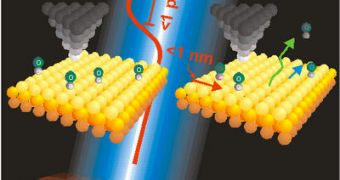You may have been thrilled by the spectacular fights with laser weapons in the "Stars War". But our worst enemies cannot be cut with a laser sword?heck, we can't even see them!
Bacteria and viruses have killed more humans than any other factor did along history. And if a cure against HIV and other plagues of the 21st century is the focus of many scientific researches nowadays, here comes the laser: this technology could provide the solution.
A team at the Arizona State University has developed a significantly improved laser technique which can kill bacteria and viruses such as HIV without harming the healthy human cells and could stop the spreading of hospital infections like superbugs (such as MRSA), which generally are resistant to antibiotics.
The study has been published on Thursday, November 1, in the Institute of Physics' Journal of Physics under the title "Condensed Matter, discusses how pulses from an infrared laser can be fine-tuned to discriminate between problem microorganisms and human cells."
Laser technologies employed at the moment are indiscriminate and may cause skin aging, or DNA damage, which can lead to mutations and skin cancer, not to mention they have a low effectiveness.
The new femtosecond laser pulses work on a completely different basis: they do not burn or produce micro-explosions in the targeted cells, but through a process named Impulsive Stimulated Raman Scattering (ISRS) they induce deadly vibrations in the protein envelope of microorganisms, killing them, a process similar to the vibrations caused by the high-pitched noise breaking a glass.
The research team has carried on tests revealing that the proper vibrations induced by specific wavelength and pulse widths infrared lasers do not harm human cells, due to the big difference in the structure and composition of the protein membrane between human cells and bacteria or viruses. "Although it is not clear at the moment why there is a large difference in laser intensity for inactivation between human cells and microorganisms such as bacteria and viruses, the research so far suggests that ISRS will be ready for use in disinfection and could provide treatments against some of the worst, often drug-resistant, bacterial and viral pathogens.", said Professor K. T. Tsen from Arizona State University.
Immediate applications of the new technology could be disinfection of blood supply or biomaterials and as a cure for blood-borne infections like AIDS and Hepatitis.

 14 DAY TRIAL //
14 DAY TRIAL //